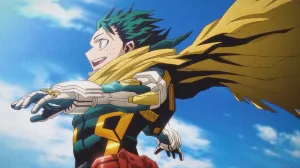
Willow Rosenberg takes center stage in the new Buffy the Vampire Slayer spinoff from BOOM! Studios. Mariko Tamaki, the celebrated storyteller of This One Summer and Laura Dean Keeps Breaking Up With Me, writes the series; Natacha Bustos of Moon Girl and Devil Dinosaur fame provides the artwork. Spinning out of the Buffy and Angel crossover event, Hellmouth, the first issue of Buffy the Vampire Slayer: Willow sets the stage for a story focused on post-traumatic ostracization and healing. While Tamaki is taking her time establishing the story’s conflict, she and Bustos have crafted an inviting aesthetic that’s bound to draw in readers.
Videos by ComicBook.com
After the events of Hellmouth, Willow finds herself lost. Xander is gone. She’s broken up with Rose. Her friendship with Buffy is damaged, perhaps irreparably. She flees to England, but those feelings of loneliness follow her, making it difficult for her to build new relationships, even with other members of the witch community. She returns to Sunnydale only to realize that it isn’t the same home she grew up in, at least not for her, anymore. She leaves again.
It’s a thorough and tender depiction of the helplessness we’re all susceptible too after a particularly harrowing experience. By leaving Sunnydale, Willow left behind all the people who know her well enough to see she’s not well. Those troubles follow her abroad. She has no inroads with the broader community. She’s not ready to build new relationships from the ground up. Thus, she finds herself alone again and still wandering.

All of this leaves Willow vulnerable when she arrives in the mysterious town of Abhainn and attracts the equally mysterious Aelara. It’s hard to say where Tamaki and Bustos plan to take this relationship as early as it is in the series. There are already clues in this issue that Aerlara has something to hide. She’s an older woman inviting an isolated and hurt younger woman to her secluded estate. In the context of Buffy’s universe, we know that Willow is a powerful spellcaster. We see subtle magic at work in this issue that moves to keep Willow as isolated as possible. It suggests that Aelara wants to claim Willow, or her power, for herself, and it isn’t hard to see the metaphor in the would-be mentor taking advantage of a struggling youth.
Bustos’ artwork is vital to this tale. For those coming to Willow from its mother series, Bustos’ style isn’t far afield from Dan Mora and David Lopez’s work on Buffy the Vampire Slayer in regards to its simple and confident linework. She excels in conveying Willow’s loneliness. The issue includes several panels and pages that emphasize how isolated Willow is by making her seem small in contrast to picturesque backdrops. Even when other people are in these shots, Willow is still separated, subtly showing how she is alone even in a crowd. Willow looks to be a miniseries that will be less heavy on combat than Buffy or Angel. Bustos’ gift for drawing these quieter moments and her ability to render a striking moment of magic—both powerfully enhanced by Eleonora Bruni’s soft, comforting colors, with hints palette-shifting colors in moments of magic—make her perfect for the story at hand. When it’s complete, Willow won’t look out of place next to Tamaki’s other graphic novels, which bodes well for its future.
Willow suffers from a problem that many first issues encounter, as it serves mostly to position the main character so the story can begin. Readers will have to wait for future installments to discover where Tamaki and Bustos are taking our wayward sorceress. They should be awaiting those new chapters eagerly, though. As an exercise in setting the stage, advancing the important themes with subtle foreshadowing, Buffy the Vampire Slayer: Willow #1 is an absolute masterclass.
Published by BOOM! Studios
On July 8, 2020
Written by Mariko Tamaki
Art by Natacha Bustos
Colors by Eleanora Bruni
Letters by Jodi Wynne








